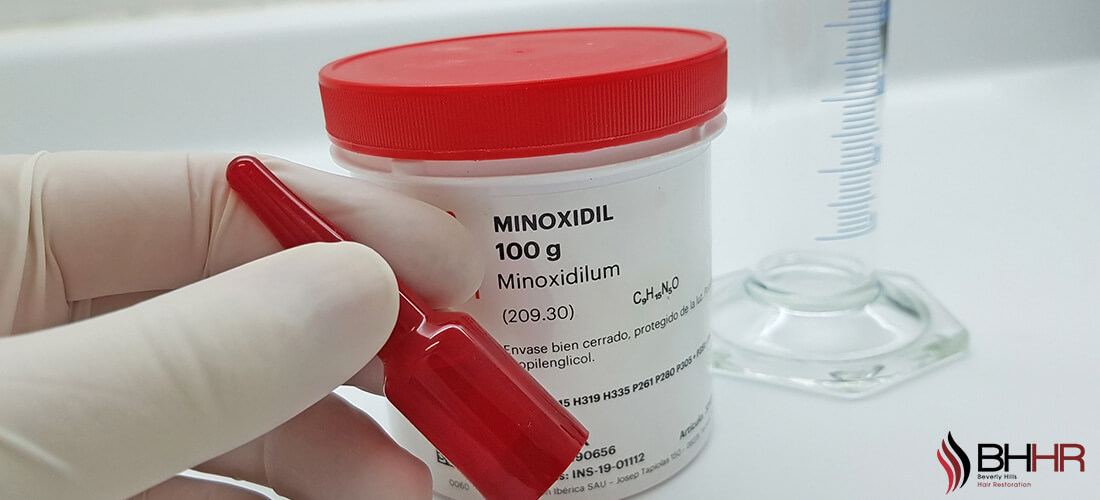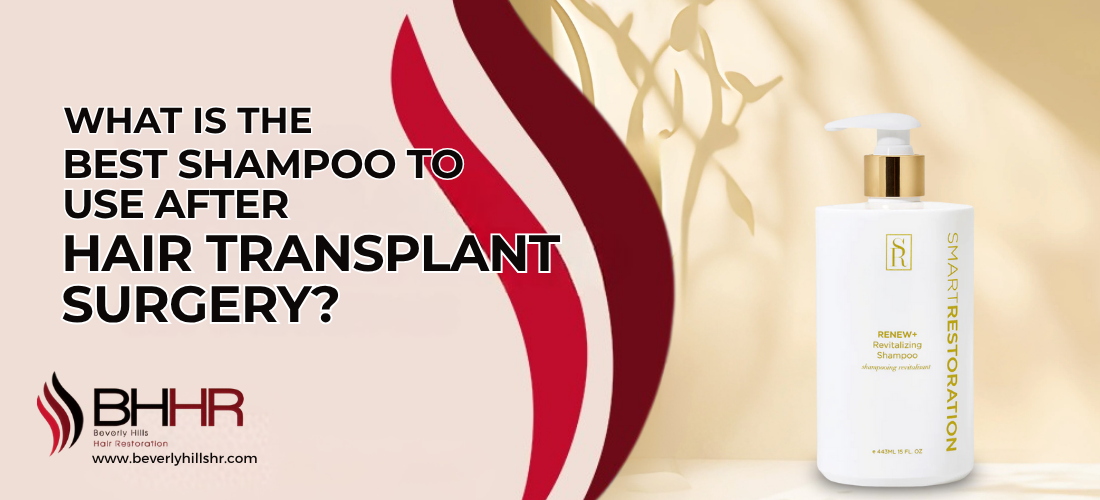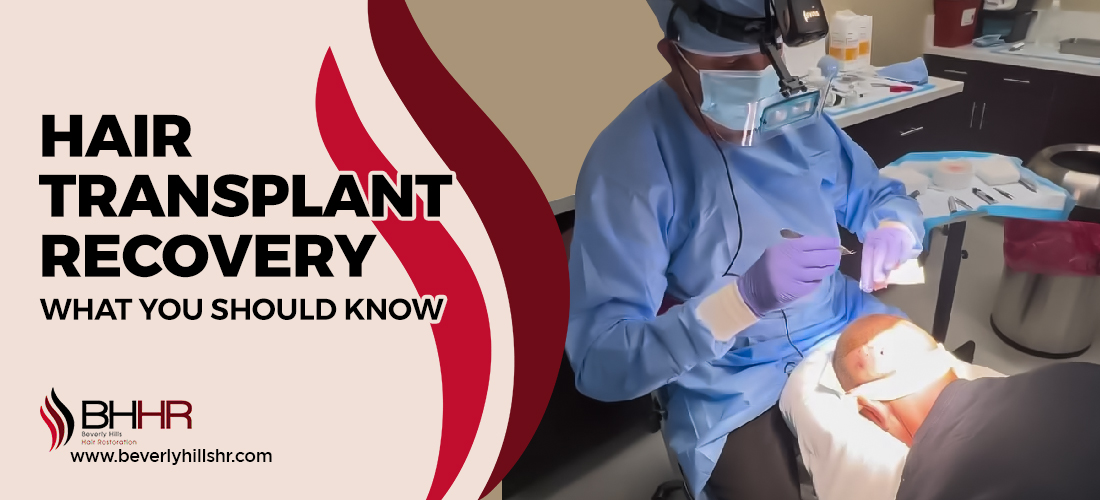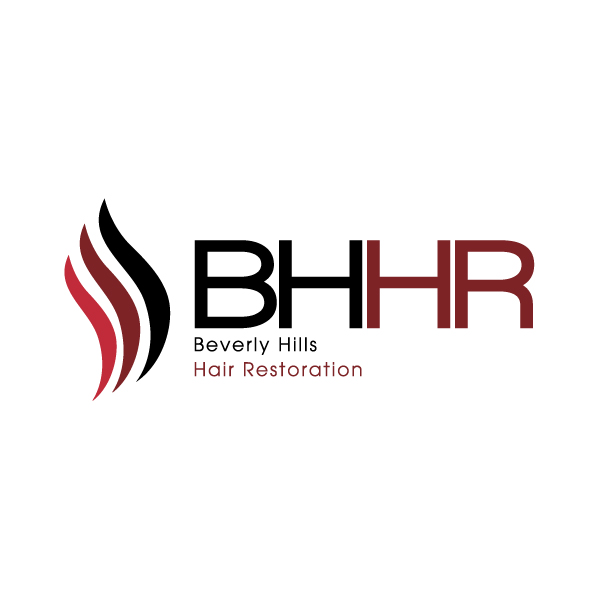Do I Need To Use Minoxidil After A Hair Transplant Procedure?
Home / Hair Transplant / Do I Need To Use Minoxidil After A Hair Transplant Procedure?
Updated On : April 07, 2025 | Category : Hair Transplant | Author: Beverly Hills Hair Restoration Team

Hair transplantation is a surgical technique that has gained immense popularity as a solution for baldness and hair thinning. With advancements in medical technology, FUE Hair Transplant and FUT Hair Transplant have emerged as the two primary methods for hair restoration.
In the FUE technique, single hair follicles are harvested from the donor region and then implanted into the areas experiencing hair loss. Conversely, the FUT method entails excising a strip of scalp with hair follicles from the donor site, followed by the individual transplantation of these follicular units. Both techniques have advantages and are chosen based on the patient's needs and the surgeon's recommendation.
A common question that arises after undergoing a hair transplant procedure is whether minoxidil is necessary. Minoxidil is a medication known for stimulating hair growth and is often prescribed to treat pattern baldness. The question of whether to use minoxidil after hair transplant is significant, as it can impact the success and longevity of the transplant results.
In this blog, we will delve into the role of minoxidil after hair transplant, exploring its benefits, and how it can complement the healing process and enhance the growth of transplanted hair. We will also discuss the considerations to consider when using minoxidil post-transplant and how it interacts with the newly transplanted follicles. Whether you have undergone an FUE or FUT hair transplant, understanding the importance of post-operative care and the use of medications like minoxidil is crucial for achieving the best possible outcomes.
WHAT IS MINOXIDIL?
Minoxidil is commonly used to stimulate hair growth and prevent hair loss. Originally used to treat high blood pressure, it was discovered to have the side effect of promoting hair growth. It is commonly used as a topical treatment for androgenetic alopecia (male and female pattern baldness) and other forms of hair loss. Minoxidil works by widening blood vessels, improving blood flow to the hair follicles, and increasing the follicle size and shaft diameter. This helps to prolong the growth phase of the hair cycle, resulting in thicker, fuller hair over time.
Why does Dr. John Kahen recommend MINOXIDIL?
Dr. John Kahen recommends Minoxidil for several reasons:
- Effective Hair Growth Stimulant: Minoxidil is proven to stimulate hair growth and slow down hair loss, making it a reliable option for patients experiencing various forms of alopecia.
- Enhances Transplanted Hair Regrowth: For patients who have undergone hair transplant procedures like FUE or FUT, Minoxidil improves blood flow to the scalp and stimulates hair follicles, thereby enhancing the regrowth of transplanted hair.
- Non-Invasive Treatment: Minoxidil is a topical solution, making it a non-invasive treatment option for patients looking for a less aggressive approach to hair restoration.
- Widely Studied and Tested: Minoxidil has been extensively studied and tested, providing a wealth of clinical data to support its efficacy and safety in treating hair loss.
- Suitable for Both Men and Women: Minoxidil is effective for both male and female pattern baldness, making it a versatile treatment option for a wide range of patients.
- Complements Hair Transplant Procedures: Minoxidil can be used as an adjunct treatment to hair transplant procedures, helping to maximize the results and ensure the longevity of the transplanted hair.
- Affordable and Accessible: Minoxidil is an affordable hair loss treatment option and is widely available, making it accessible to a large number of patients.
- Low Risk of Side Effects: When used as directed, Minoxidil is a safe option for long-term use with a low risk of side effects.
- Addresses Multiple Stages of Hair Loss: Minoxidil can be effective at various stages of hair loss, from early thinning to more advanced baldness, providing a comprehensive solution for patients.
Dr. Kahen recommends Minoxidil as part of a comprehensive approach to hair restoration, combining it with other treatments and procedures as necessary to achieve optimal results for each patient.
Boost Your Hair Growth with Minoxidil!
After your hair transplant, Finasteride and Minoxidil Spray help speed up regrowth and give you thicker, stronger hair. See visible results in just 3-6 months!
Order now
WHEN CAN I START USING MINOXIDIL?
Dr. John Kahen recommends using Minoxidil before and after hair transplant procedures to optimize hair restoration results. Here’s a concise guide on when you can start using Minoxidil:
Minoxidil Before Hair Transplant
Dr. Kahen advises incorporating Minoxidil into your hair care regimen before undergoing a hair transplant. The rationale behind this recommendation lies in Minoxidil’s ability to strengthen existing hair and potentially improve the scalp’s condition, making it more conducive to the transplant procedure. This pre-treatment can enhance the overall outcome, as healthier hair follicles are more likely to succeed post-transplant.
Minoxidil After Hair Transplant
Following the surgery, Dr. Kahen suggests continuing or starting Minoxidil to support the newly transplanted hair follicles. Minoxidil can expedite the growth phase of these follicles, encouraging quicker regrowth and enhancing the density of the transplant. For post-operative care, Minoxidil is recommended in both pill and liquid forms, depending on individual patient needs and the specific guidance of Dr. Kahen. The liquid form is directly applied to the scalp, targeting the affected area, while the pill form is systemic.
Following Dr. Kahen’s instructions regarding the timing of Minoxidil application post-transplant is crucial, as the scalp needs time to heal. Typically, Minoxidil therapy can commence a few weeks after the procedure, ensuring that the treatment does not interfere with the healing process.
MUST THE HAIR LOSS PATIENT USE MINOXIDIL
Using Minoxidil after a hair transplant procedure is not necessary. While some patients will have a hair transplant surgery to avoid using a medication, others just won’t just need it since they are not suffering from generic hair loss conditions. Most surgeons will only recommend Minoxidil as a complementary adjunctive post-transplant therapy. In other words, it is popularly used to speed up results in a hair transplant procedure. If the results were expected in 4-6 months, Minoxidil would reduce it to 2 to 3 months. As much as this hair loss drug produces good results, not everyone is comfortable using it. Therefore, online hair consultation between the surgeon and the patient should be done to know whether it is necessary or not to use Minoxidil. This virtual consultation is essential because it allows the surgeon to assess the patient's condition, discuss the potential benefits and risks of using Minoxidil, and make proper preparation for the surgery and aftercare. By conducting a virtual consultation, the surgeon can gather all the necessary information and provide personalized recommendations based on the patient's specific needs and circumstances.
Also, you can check How much our hair transplant services cost in Los Angeles.
A Case Study
In a recent study, 12 hair transplant patients aged between 21 and 60 years were tested to help establish the effectiveness of Minoxidil. These subjects underwent hair transplant surgery. After having the hair transplant surgery, Minoxidil was administered 48 to 72 hours after. In 2 to 4 weeks after the procedure, the shock loss phase took place. Out of all the patients, 2 of them did not experience the shock loss phase. In all the subjects, hair growth was quick and healthy. Of the 10 remaining patients, 2 of them experienced postsurgical telogen effluvium. However, within four weeks after shedding, hair growth started. Initially, patients who did not use Minoxidil experienced shedding of the transplanted hair grafts. Hair growth also began 3 to 5 months after the surgery was done.
From the mentioned study, it is plain to see that using Minoxidil as adjunctive therapy is useful after a hair transplant procedure since it speeds up recovery. To fully support these findings, doctors need to do more of these studies.
Schedule a Free Consultation Now
If you require the best services in terms of hair transplant surgeries done by the best surgeons in the US, then meet Dr. John Kahen at our hair transplant clinic in Los Angeles. Moreover, you can schedule a free hair transplant consultation session by filling out the consultation form below.
FAQs
Is Minoxidil safe to use?
Minoxidil is safe to use since it is approved by the US FDA and Health Canada as a hair loss medication treatment for both women and men patients undergoing hair loss. The two versions of this drug include 2% and 5% topical solutions. Even though the minoxidil drug is safe, patients need to be cautious when using it. Besides that, Minoxidil is also used to treat severe hypertension when taken as an orally active vasodilator.
Does Minoxidil help to regrow hair?
If the hair loss has started happening, taking Minoxidil may prevent further hair loss as well as help to regrow hair. Currently, the only hair loss medication that is FDA-approved and clinically proven to help regrow hair is Minoxidil.
Does Minoxidil affect the kidney?
Using Minoxidil for a long time will affect the heart and arteries, rendering them not functioning as intended. Using it for a long time causes damage to blood, brain vessels, kidney, and the heart, which may cause kidney failure, stroke, or heart failure.
What happens if you use too much Minoxidil?
Using high concentrations of Minoxidil may lead to chest pains, face flushing, headaches, and fainting.
How long should you use Minoxidil?
You can start using Minoxidil as soon as you have had a hair transplant surgery since it starts working immediately. However, noticeable results will only be seen after six months. Full hair transplant results will only be seen after a heart.
How quickly does minoxidil work ?
Minoxidil typically begins to work within a few weeks to a few months of starting treatment. Most people see noticeable hair growth or reduced hair loss after using it consistently for about 3 to 6 months. However, results can vary depending on the individual's response to the medication.
What will happen if I don't use minoxidil after hair transplant?
If you don't use minoxidil after a hair transplant, you may miss out on its benefits of promoting hair growth and improving the density of transplanted hair. However, not using minoxidil doesn't affect the survival of the transplanted grafts, as they are permanent and will continue to grow.
Here are a few more topics that you shouldn’t miss:
Exploring the FUE Hair Transplant Benefits
What Are the Benefits of FUT Hair Transplant?
Like this post? Don’t forget to share



